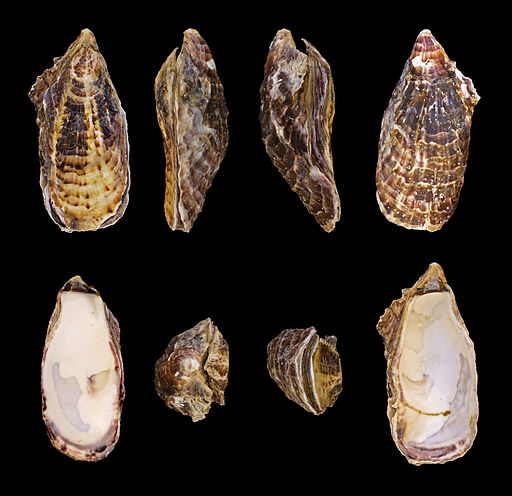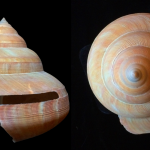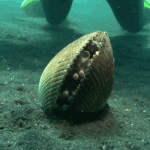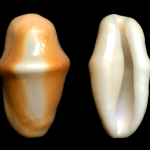Starting around 540 million years ago during the Cambrian explosion many animal phyla, including the freshest of them all—bivalves, came into existence. Within ~100 million years, bivalves gained gills modified to filter feed, siphons to better breath, and a muscular foot to bury themselves into the sediment. However, for the last ~400 million years bivalves have essentially been bivalves. Bivalves are still representing old school. So how have bivalves “been here for years”?
Even in the face of massive environmental change, bivalves are able to mount up and regulate.
 The Pacific Oyster, Crassostrea gigas, may not look like the most badass of all living animals but it survives in the toughest of toughs, the intertidal. Not that pretty rocky picturesque Maine intertidal either, but that nasty, stanky, murky water of the estuary. When they are not surviving being out of the water half the day, they face rapid changes in temperature and salinity, exposure to toxics metals, and predation. And that’s just Friday.
The Pacific Oyster, Crassostrea gigas, may not look like the most badass of all living animals but it survives in the toughest of toughs, the intertidal. Not that pretty rocky picturesque Maine intertidal either, but that nasty, stanky, murky water of the estuary. When they are not surviving being out of the water half the day, they face rapid changes in temperature and salinity, exposure to toxics metals, and predation. And that’s just Friday.
A team of too many authors to count in an open access paper has sequenced this oyster’s genome to uncover what makes this bivalve so bad ass. It is the genes (not the apple bottom variety). The group found over 28,027 genes and 8,654 of these were oyster-specific genes, key to bivalve bad assery. In the words of the authors “[we found an] over-representation of some host-defence genes against biotic and abiotic stress.” More specifically over abundance of genes were found to combat air exposure (3,155 unique genes), heavy metals (840), salinity (347), and temperature.” These numbers don’t even include the over 1,000 genes that can simultaneously deal with air exposure, heavy metals, salinity, and temperature.

The oyster genome contains 88 heat shock protein 70 (HSP70) genes, which have crucial roles in protecting cells against heat and other stresses, compared with ,17 in humans and 39 in sea urchins…. The oyster genome has 48 genes coding for inhibitor of apoptosis proteins (IAPs), compared with 8 in humans and 7 in sea urchins
Damaged cells, injured by mechanical damage or exposure to toxins, often go through a programed suicide, called apoptosis. The oyster genome reveals a set of genes that inhibits this process. We ain’t going out like that!
Many of the immune-related genes are expressed in the digestive gland, suggesting the gut is first line defense again pathogens. Dodgy taco truck at 2 am? Filtering mucky turbid estuary water for food? No problem.
Of course the ultimate defense for bivalves is the shell. The team found that the genome codes for 259 different shell proteins and potentially solved a key question of shell formation. Is new shell material constructed inside or outside of cells? Answer: within. And in order to two do this it a super expanded set of genes. For example human have but one measly gene to code for tryosinase, a enzyme that regulates melanin production oysters have 26. Melanin is the pigment that determines your skin color and serves as excellent UV protector. So you the next time you gaze upon dark beautiful oyster shell, recognize that you just got smacked up side the face with 26 genes worth of melanin. Black is back!
Can bivalves kick it? Yes they can! Probably for another 400 million years with genes likes these.
Zhang et al. (2012) The oyster genome reveals stress adaptation and complexity of shell formation doi:10.1038/nature11413





